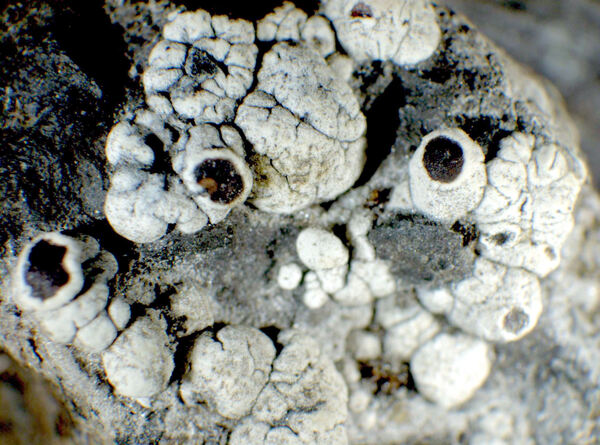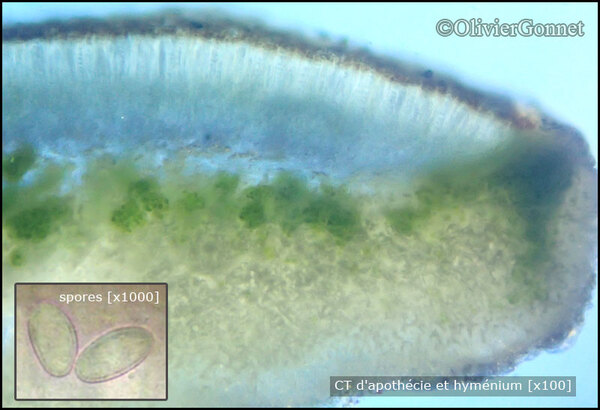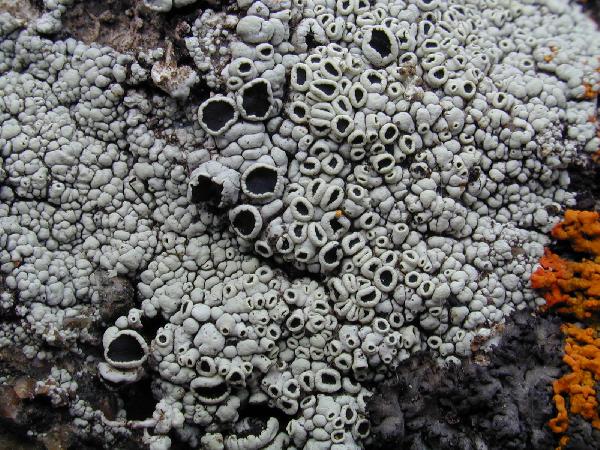Lecanora frustulosa (Dicks.) Ach.
Lichenogr. Univ.: 405, 1810. Basionym: Lichen frustulosus Dicks. - Fasc. Pl. Crypt. Brit., 3: 13, 1793.
Synonyms: Lecanora frustulosa var. ludwigii (Spreng.) Th. Fr.; Lecanora hydrophila Sommerf.; Lecanora insulata (Ramond) Steud.; Lecanora ludwigii (Spreng.) Ach.; Lecidea bossoniana Croz.; Patellaria frustulosa (Dicks.) Trevis.; Toninia bossoniana (Croz.) Zahlbr.
Distribution: N - Frl (Herb. Ravera 4380), Ven, TAA (Obermayer 1998, Nascimbene & al. 2022), Lomb, Piem (Isocrono & al. 2004), VA (Piervittori & Isocrono 1999, Isocrono & al. 2008, Favero-Longo & Piervittori 2009), Emil (Fariselli & al. 2020). C - Tosc, Sar.
Description: Thallus crustose, episubstratic, areolate to almost subsquamulose, pale cream-yellow to yellowish white, with a usually well-developed, black prothallus, the areoles contiguous to usually dispersed, 1-1.5 mm wide, convex, sometimes almost globular, attached by an umbilicus-like bundle of hyphae, the peripheral ones often elongate and somewhat radiating. Cortex (25-)40-50 µm thick, of more or less anticlinally arranged hyphae, filled with coarse, 3.5-7 µm wide, colourless crystals not dissolving in K and in N; medulla white in upper part, often brown in lower part, filled with crystals. Apothecia frequent, lecanorine, (0.6-)1-2(-3) mm across, at first adnate, then broadly sessile, with a brown to brown-black, epruinose, slightly concave to convex disc and a thin, subcrenulate, hardly prominent, finally often excluded thalline margin. Thalline exciple corticate, the cortex 25-50 µm thick, filled with crystals; proper exciple 20-40 µm wide; epithecium brown, N-, overlain by a 3-5 µm thick colourless layer; hymenium colourless, 50-90 µm high, I+ blue; paraphyses simple or sparingly branched in upper part, 1.5-2.5 µm thick at mid-level, the apical cells to 4.5 µm wide; hypothecium colourless. Asci 8-spored, clavate, very thin-walled, with a K/I+ blue, tall tholus penetrated by a faintly amyloid apical cushion, the wall K/I-, surrounded by a blue outer layer, Lecanora-type. Ascospores 1-celled, hyaline, narrowly ellipsoid to ellipsoid, 9-16(-18) x 4-7(-9) µm. Pycnidia immersed, ovoid to subglobose, the wall colourless except near the dark ostiole. Conidia thread-like, straight or curved, 21-39 x c. 0.5 µm. Photobiont chlorococcoid. Spot tests: cortex K+ yellow to pale yellow, sometimes K-, C-, KC+ yellow, P+ yellow to orange-yellow, UV+ dull orange; medulla always K-, P- or P+ pale orange yellow. Chemistry: usnic acid (major, in cortex only), sometimes with different combinations of stictic, norstictic, and cryptostictic acids, epanorin, zeorin, fatty acids (minor or absent). Note: on steeply inclined surfaces of weakly calciferous siliceous rocks, often in otherwise dry seepage tracks, mostly in upland areas. Some Italian records need to be checked, as this species was not always distinguished in the past from L. argopholis. For further details see Vänskä (1984).
Growth form: Crustose
Substrata: rocks
Photobiont: green algae other than Trentepohlia
Reproductive strategy: mainly sexual
Subcontinental: restricted to areas with a dry-subcontinental climate (e.g. dry Alpine valleys, parts of Mediterranean Italy)
Commonnes-rarity: (info)
Alpine belt: very rare
Subalpine belt: rare
Oromediterranean belt: extremely rare
Montane belt: very rare
Submediterranean belt: absent
Padanian area: absent
Humid submediterranean belt: absent
Humid mediterranean belt: absent
Dry mediterranean belt: absent

Predictive model
Herbarium samples
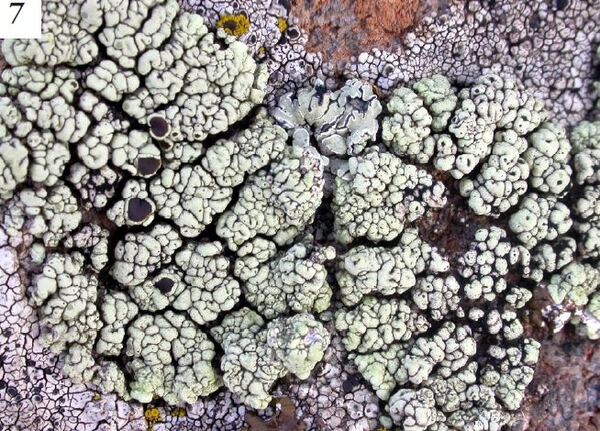
Source: Roux C., Bertrand M., Poumarat S., Uriac P. 2022. Quelques espèces nouvelles saxicoles – calcifuges de Lecanora du groupe polytropa (Ascomycota, Lecanoraceae) découvertes en France. Bull. Soc. linn. Provence, 73: 79-120.
Growth form: Crustose
Substrata: rocks
Photobiont: green algae other than Trentepohlia
Reproductive strategy: mainly sexual
Subcontinental: restricted to areas with a dry-subcontinental climate (e.g. dry Alpine valleys, parts of Mediterranean Italy)
Commonnes-rarity: (info)
Alpine belt: very rare
Subalpine belt: rare
Oromediterranean belt: extremely rare
Montane belt: very rare
Submediterranean belt: absent
Padanian area: absent
Humid submediterranean belt: absent
Humid mediterranean belt: absent
Dry mediterranean belt: absent

Predictive model
| Herbarium samples |

 INDEX FUNGORUM
INDEX FUNGORUM
 GBIF
GBIF
 DOLICHENS
DOLICHENS
